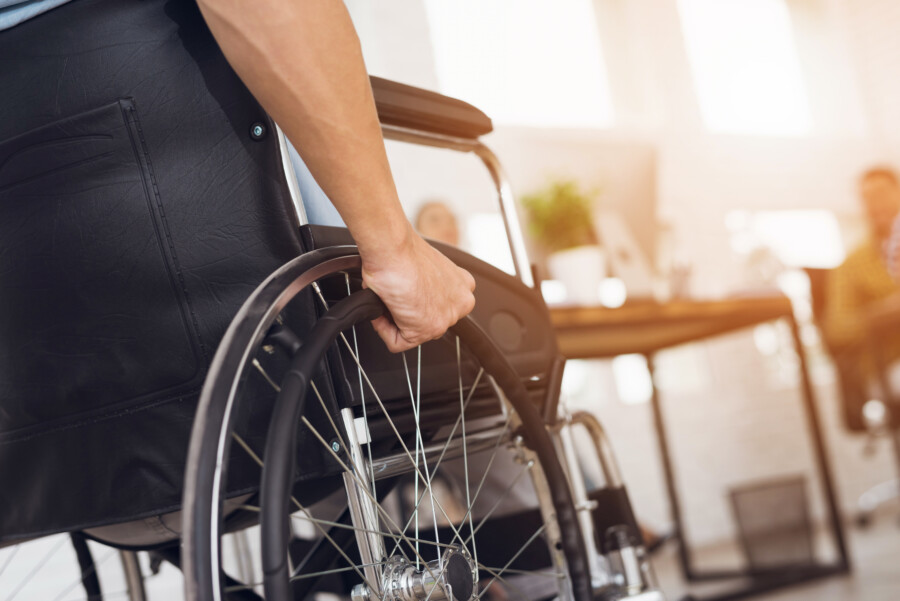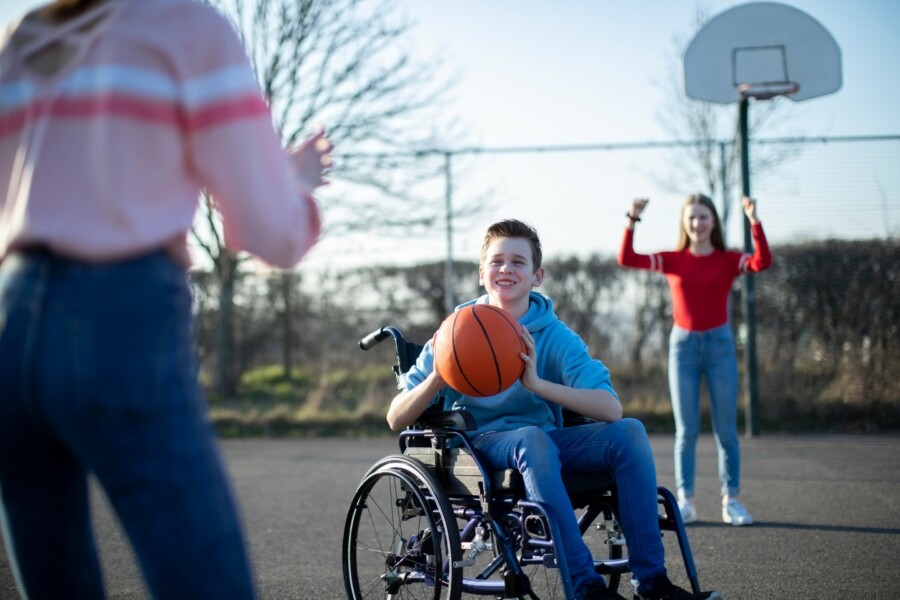Healthcare professionals categorise spinal cord injury as either a ‘traumatic’ or ‘non-traumatic’.
- Traumatic spinal cord injuries arise, for example, from car accidents, falls and sporting injuries. These sorts of spinal cord injuries often happen relatively instantly and, in many instances, within seconds
- Non-traumatic spinal cord injuries are the injuries which can occur over time – hours, days or months. For example, an infection or tumour can cause a non-traumatic spinal cord injury, as can vascular complications following spinal surgery
A person affected will require rehabilitation regardless of whether they became paralysed through traumatic or non-traumatic means. However, the means and severity of their spinal cord injury may determine whether any recovery or repair of the spinal cord is possible and to what degree.
I have a complete spinal cord injury. Will I walk unaided again?
There is currently no form of treatment, medication or surgery that can completely reverse or repair the full effects of a complete spinal cord injury.
Currently, people affected by spinal cord injury have to look to rehabilitation, technological breakthroughs and equipment, which enable them to carry out everyday tasks in spite of their complete spinal cord injury.
If someone has sustained an incomplete spinal cord injury, depending on the severity and mechanism, it may be possible through intensive rehabilitation to regain some form of meaningful function. It is very rare for someone to recover fully after sustaining an incomplete spinal cord injury. However, there are various therapies available to help the person affected achieve their potential within the remit of their injury.
Bladder and bowel function
If someone sustains a spinal cord injury, it won’t just be their ability to walk that has been affected.
Depending on their level of injury, they will nearly always have bladder, bowel and sexual dysfunction to some degree.
If the injury has occurred higher up the spine, around the shoulders and neck, then the person’s arm, hand and finger function may be affected as well.
When someone first becomes injured, medics often state that the issue which troubles them most is the inability to walk.
If medics ask their patients the same question 12 months after they have become paralysed, they report that most people are troubled by their bowel, bladder and sexual function rather than the inability to walk. For people with a high level injury (tetraplegia), improved hand and finger function will often be cited as more important than the need to walk again.
Spinal cord repair
The media frequently report scientific breakthroughs which are held out as being the cure for spinal cord injury. While many neuroscientists are making huge advances in understanding how to repair the spinal cord, they have yet to make the breakthrough which allows someone to walk fully unaided again, as well as regain full bladder, bowel and sexual function.
Spinal cord repair has to remain at the forefront of science if a full repair of the spinal cord is ever to be achieved. Support and finances will need to be made available for neuroscientists so they can continue to research and develop their theories.
Some of the most recent scientific breakthroughs are considered below.
Olfactory ensheathing cells (OECs)
OECs are cells found in the nasal cavity which, when removed from the nose and transplanted into the spinal cord, have been found to aid spinal cord repair.
OECs act as pathway cells that enable nerve fibres in the olfactory system to be continually renewed.
In 2014, news broke of a man in Poland who had undergone this pioneering stem cell treatment. He had been stabbed with a knife, which resulted in a spinal cord injury.
At the same time, strips of nerve tissue were taken from the patient’s ankle and placed across a gap on one side of the cord where he had been stabbed. The neuroscientists believe the OECs provided a pathway to enable fibres above and below the injury to reconnect, using the nerve grafts to bridge the gap in the cord caused by the knife wound.
Following the treatment and intensive rehabilitation, the patient was able to walk slowly using a frame, saw improvements in bladder and sexual function, and did not experience as much pain as before.
Further funding is now required for the researchers to take this technique into the next phase and test the procedure out on other select individuals. Only once they can replicate similar or better results in a wider cohort will this technique be utilised in the wider spinal injury community.
Neural bypass
This technique involves a computer reading signals from the brain of the person affected by a spinal cord injury.
The computer system allows the brain to bypass the injured spinal cord and instead send messages through a computer algorithm to electrodes placed around the person’s knees to trigger controlled leg muscle movements.
It allows the person with the spinal cord injury to ‘think’ and send a message through the bypass to the limbs he or she wishes to move. As the spinal cord is bypassed, the desired function can be achieved. The technique essentially translates thoughts into movement.
So far, neural bypasses only allow someone to walk or move their limbs. The technique does not currently improve bladder, bowel or sexual function, nor is there any improvement in pain.
Molecular neuroregeneration
Imperial College is carrying out research to identify the key signalling pathways that are responsible for regenerative failure and subsequent disability following spinal cord injury. The research is extremely scientific and is based on the way that molecules work within the body.
Researchers are particularly interested in understanding how some parts of the nervous system make a stronger effort to grow back when they are damaged than others.
If damage occurs in the peripheral nervous system, which controls areas outside of the brain and spinal cord, about 30% of the nerves grow back and there is often recovery of movement and function.
This doesn’t happen in the central nervous system, which does affect the spinal cord. The researchers want to explore whether it is possible to generate a similar response in the central nervous system.
Cancer drugs which could repair the spinal cord
In conjunction with the above, Imperial College is carrying out research into Nutlins, which promote nerve regrowth.
Spinal cord nerves have a very limited ability to regrow, so damage is often permanent, and there are currently no effective treatments. Researchers at Imperial College are trying to understand the mechanisms that stop damaged nerves from repairing themselves.
They have identified a series of proteins that interact to restrict nerve growth. After treatment with Nutlins, which stop these proteins interacting, they were able to make nerves regrow, first in mice with injuries to the optic nerve and then in mice with spinal cord injuries.
Mice treated with a placebo made only a slight recovery in their movement ability after a spinal cord injury. Mice treated with Nutlins made a much stronger recovery, achieving higher scores on tests assessing their movement.
Further clinical trials into the use of Nutlins are awaited and, if successful, may merit trials in people who have sustained a spinal cord injury.
How we can help if you or a loved one becomes paralysed today
For the person who becomes paralysed today, support and finances to help manage the spinal cord injury are vital to ensure that they adapt to their injury as far as possible.
At Bolt Burdon Kemp, we believe that a claim is about more than just compensation. It is about:
- Giving clients access to rehabilitation, treatment and equipment from an early stage, to ensure that they have the best quality of life possible following a spinal injury
- Peace of mind that their complex needs will always be met, including those associated with care, equipment and accommodation, regardless of state-funded healthcare
The NHS will provide you with the vital basics to enable you to live independently. However, compensation aims to put you back in the position you would have been in if you had never sustained a spinal cord injury. The aim of compensation is to provide you with lifelong, independent funding to help meet these new and complex needs, which would not have arisen had you not suffered your injury.
If you or a member of your family has been unfortunate enough to have suffered a spinal injury as a result of an accident or substandard medical treatment, our specialist spinal injury solicitors can assist you in bringing a compensation claim against the people and/or organisations responsible.
Please contact our specialist spinal injury team on 0203 6279 929 or complete our online spinal injury enquiry form.











